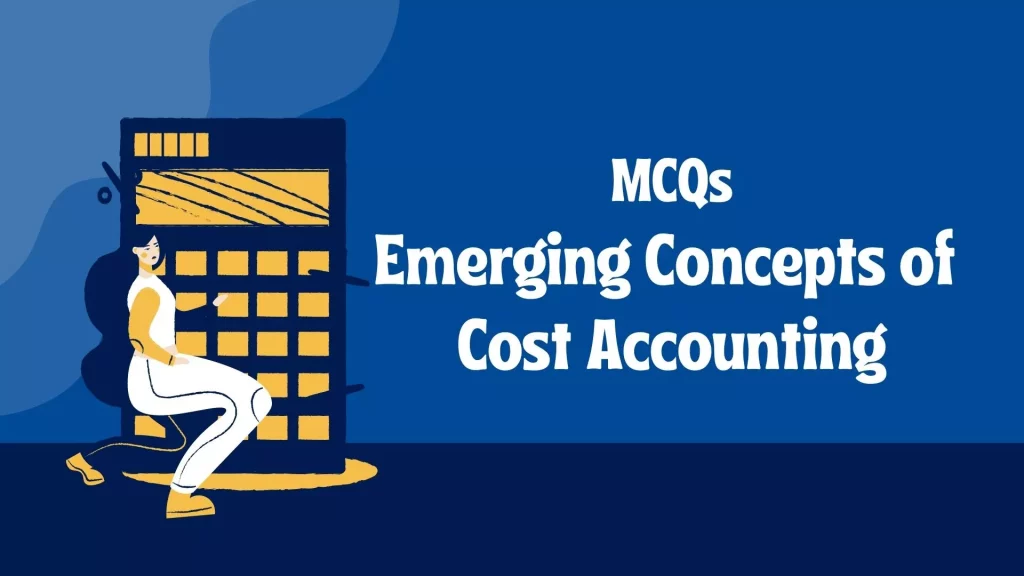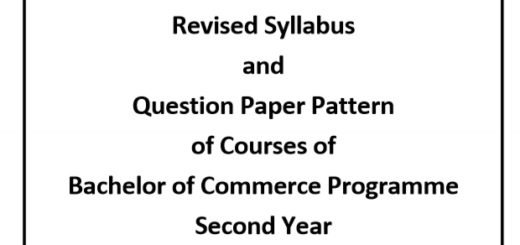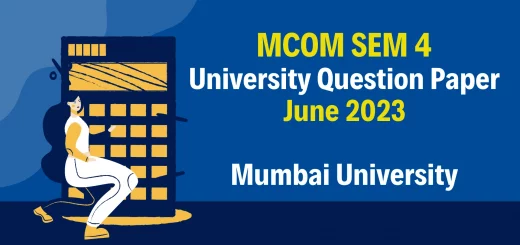50+ MCQ’s Emerging Concepts of Cost Accounting | (Free Resource)
MCQ’s Emerging Concepts of Cost Accounting

1. Place the following steps for the implementation of target costing in order :
A = Derive a target cost
B = Develop a target price
C = Perform value engineering
D = Determine target profit
(a) B, D, A, C
(b) B, A, D, C
(c) A, D, B, C
(d) A, B, C, D
2. In target costing
(a) the target cost is established first, then the target price.
(b) the target cost is the estimated long-run cost that enables a product or service to achieve a desired profit
(c) the focus of target costing is to undercut the competition
(d) target costs are generally higher than current costs
3. The product strategy in which companies first determine the price at which they can sell a new product and then design a product that can be produced at a low enough cost to provide adequate operating income is referred to as
(a) Cost-plus pricing
(b) Target costing
(c) Benchmark costing
(d) Full costing
4. The costing technique that produces a stipulated profit when a product is sold at its estimated market-driven price is termed:
(a) Life cycle costing
(b) Product costing
(c) Target costing
(d) Standard costing
5. The four tasks that follow take place in the concept known as target costing:
(1) Value engineering
(2) Establish a target selling price
(3) Establish a target cost
(4) Establish a target profit
Which is the correct sequence of these tasks?
(a) 1, 3, 4, 2
(b) 3, 1, 4, 2
(c) 2, 4, 3, 1
(d) 2, 3, 1, 4
6. Ramesh uses target costing and sells a product for Rs 36 per unit. The company seeks a profit margin equal to 25% of sales. If the current manufacturing cost is Rs 29 per unit, the firm will need to implement a cost reduction of
(a) Rs 0
(b) Rs 2
(c) Rs 9
(d) Rs 20
7. Sun Corporation uses target costing and sells a product for Rs 40 per unit. The company seeks a profit margin equal to 30% of sales. If target-costing calculations revealed a need for a Rs 4 cost reduction, the firm’s current manufacturing cost must be:
(a) Rs 12
(b) Rs 24
(c) Rs 28
(d) Rs 32
8. Which of the following denotes a target cost?
(a) Market price – Desired profit margin
(b) Standard selling price – Standard profit margin
(c) Standard selling price – Target profit margin
(d) Desired selling price – Desired profit margin
(e) Market price – Return on Investment (ROI)
9. Which of the following is true with respect to target costing?
(a) It is a method of price determination
(b) It is used to develop a short run price
(c) It is a process where the cost of the product is determined and then an appropriate price is chosen
(d) It is the maximum manufacturing cost for a product which is arrived at by subtracting the acceptable profit margin from the expected market price
10. Which of the following is usually the longest stage in the product life cycle?
(a) Introduction phase
(b) Growth phase
(c) Maturity phase
(d) Saturation phase
(e) Decline Phase
| Answers: 1)B, D, A, C 2)the target cost is the estimated long-run cost that enables a product or service to achieve a desired profit 3)Target costing 4)Target costing 5)2, 4, 3, 1 6)Rs 2 7)Rs 32 8)Market price – Desired profit margin 9)It is the maximum manufacturing cost for a product which is arrived at by subtracting the acceptable profit margin from the expected market price 10)Maturity phase |
11. Which of the following is not a characteristic or assumption of Product Life Cycle Costing?
(a) Product cost, revenue and profit patterns tend to follow predictable courses through the product life cycle
(b) Each phase of the product life cycle poses different threats and opportunities
(c) The products have infinite life period
(d) Profit per unit varies as product move through their life cycle
(e) Products require different functional emphasis in each phase
12. Most of a product’s life-cycle costs are locked in by decisions made during the business function of the value chain.
(a) Design
(b) Manufacturing
(c) Customer-service
(d) Marketing
13. Life-cycle costing is particularly important when
(a) the development period for R&D is short and inexpensive
(b) there are significant non-production costs
(c) most costs are locked in during production
(d) a low percentage of costs are incurred before any revenues are received
14. Life-cycle costing
(a) has little in common with target costing
(b) is most useful to companies that manufacture small items such as household plastics
(c) helps companies estimate revenues over a multiyear horizon
(d) gives companies more insight into total costs when manufacturing costs consume the majority of the resources
15. The comparison of a company’s practices and performance levels against those of other organizations is most commonly known as
(a) Benchmarking
(b) Continuous improvement
(c) Re-engineering
(d) Comparative analysis
16. Comparing the way a “best-in-class” company performs a specific activity (such as distribution) is called
(a) Competitive Benchmarking
(b) Internal Benchmarking
(c) Analogus Benchmarking
(d) Operational Benchmarking
17. Benchmarking allows a company to
(a) identify its strengths and weaknesses
(b) imitate those ideas that are readily transferable
(c) improve on methods in use by others
(d) all of the above
18. Which of the following is not a step in benchmarking procedures?
(a) Analyse the “worst-in-class” companies
(b) Engage in continuous improvement
(c) Analyse the “performance gap”
(d) Identify “best-in-class” companies
19. In ABC indirect costs are allocated to the products based on
(a) types of activities used by the product
(b) the extent to which the activities are used
(c) both (a) and (b)
(d) none of the above
20. Four basic steps are used in an ABC system. List the proper order of these steps given below:
(A) Identify the primary activities and estimate a total cost pool for each.
(B) Allocate the costs to the cost object using the activity cost allocation rates.
(C) Select an allocation base for each activity.
(D) Calculate an activity cost allocation rate for each activity.
(a) C, A, B, D
(b) A, C, D, B
(c) B, A, C, D
(d) A, D, C, B
| Answers: 11)The products have infinite life period 12)Design 13)there are significant non-production costs 14)helps companies estimate revenues over a multiyear horizon 15)Benchmarking 16)Competitive Benchmarking 17)all of the above 18)types of activities used by the product 19)both (a) and (b) 20)A, C, D, B |
21. All of the following are considered to be part of the activity levels often used to implement ABC, with the exception of
(a) production-level activity
(b) batch-level activity
(c) product-level activity
(d) unit-level activity
22. Which of the following systems focuses on activities as the fundamental cost objects and uses the costs of those activities for compiling the indirect costs of products?
(a) Job costing
(b) Activity-based costing
(c) Process costing
(d) Product costing
23. Regarding activity-based costing systems, which of the following statements is true?
(a) ABC systems accumulate overhead costs by departments.
(b) ABC costing systems are less complex and, therefore, less costly than traditional systems.
(c) ABC costing systems have separate indirect cost allocation rates for each activity.
(d) ABC costing systems can be used in manufacturing firms only.
24. Examples of activities at the batch level of costs include:
(a) cutting, painting, and packaging
(b) material ordering, machine set up, and inspection
(c) designing, part-specification, and advertising
(d) heating, lighting, and security
(e) none of the above
25. Examples of activities at the product level of costs include:
(a) cutting, painting, and packaging
(b) material ordering, machine set up, and inspection
(c) designing, part-specification, and advertising
(d) heating, lighting, and security
(e) none of the above
26. Which of the following is typically regarded as a cost driver in traditional accounting practices?
(a) Number of purchase orders processed
(b) Number of customers served
(c) Number of transactions processed
(d) Number of direct labour hours worked
27. The term cost driver refers to
(a) any activity that can be used to predict cost changes
(b) the attempt to control expenditures at a reasonable level
(c) the person who gathers and delivers cost data to the management accountant
(d) any activity that causes costs to be incurred
28. Cost allocation bases in activity-based costing should be
(a) Cost drivers
(b) Cost pools
(c) Activity centers
(d) Resources
29. Costs that are common to many different activities within an organization are known as _______ costs.
(a) Product-level
(b) Facility-level
(c) Batch-level
(d) Unit-level
30. Relative to traditional product costing, activity-based costing differs in the way costs are
(a) processed
(b) allocated
(c) benchmarked
(d) incurred
| Answer: 21)production-level activity 22)Activity-based costing 23)ABC costing systems have separate indirect cost allocation rates for each activity. 24)material ordering, machine set up, and inspection 25)designing, part-specification, and advertising 26)Number of direct labour hours worked 27)any activity that causes costs to be incurred 28)Cost drivers 29)Facility-level 30)allocated |
31. Which one of the following is a collection of overhead costs related to a cost object?
(a) Cost pool
(b) Cost driver
(c) Cost object
(d) Cost allocation
32. In activity-based costing, final cost allocations assign costs to
(a) departments
(b) processes
(c) products
(d) activities
33. Activity rates are determined by
(a) dividing the actual cost for each activity pool by the actual activity base for that pool
(b) dividing the cost budgeted for each activity pool by the estimated activity base for that pool
(c) dividing the actual cost for each activity pool by the estimated activity base for that pool
(d) dividing the cost budgeted for each activity pool by the actual activity base in that pool
34. Providing the power required to run production equipment is an example of a
(a) Unit-level activity
(b) Batch-level activity
(c) Product-level activity
(d) Organization-sustaining activity
35. The following tasks are associated with an activity-based costing system:
(1) Calculation of cost application rates
(2) Identification of cost drivers
(3) Assignment of cost to products
(4) Identification of cost pools
Which of the following choices correctly expresses the proper order of the preceding tasks?
(a) 1, 2, 3, 4
(b) 2, 4, 1, 3
(c) 3, 4, 2, 1
(d) 4, 2, 1, 3
(e) 4, 2, 3, 1
36.Which of the following is not a broad, cost classification category typically used in activity-based costing?
(a) Unit-level
(b) Batch-level
(c) Product-sustaining level
(d) Facility-level
(e) Management-level
37. In an activity-based costing system, direct materials used would typically be classified as a
(a) unit-level cost
(b) batch-level cost
(c) product-sustaining cost
(d) facility-level cost
38. In an activity-based costing system, materials receiving would typically be classified as a
(a) unit-level activity
(b) batch-level activity
(c) product-sustaining activity
(d) facility-level activity
39.The salaries of a manufacturing plant’s management are said to arise from
(a) unit-level activities
(b) batch-level activities
(c) product-sustaining activities
(d) facility-level activities
40. An activity that has a direct cause-effect relationship with the resources consumed is a (n)
(a) cost driver
(b) overhead rate
(c) cost pool
(d) product activity
| Answer: 31)Cost pool 32)products 33)dividing the cost budgeted for each activity pool by the estimated activity base for that pool 34)Unit-level activity 35)4, 2, 1, 3 36)Management-level 37)unit-level cost 38)batch-level activity 39)facility-level activities 40)cost driver |
41. A well-designed activity-based costing system starts with:
(a) identifying the activity-cost pools
(b) computing the activity-based overhead rate
(c) assigning manufacturing overhead costs for each activity cost pool to products
(d) analysing the activities performed to manufacture a product
42. Assigning overhead using ABC will usually
(a) decrease the cost per unit for low volume products as compared to a traditional overhead allocation
(b) increase the cost per unit for low volume products as compared to a traditional overhead allocation
(c) provide less accurate cost per unit for low volume products than will traditional costing
(d) result in the same cost per unit for low volume products as does traditional costing
43. The primary benefit of ABC is it provides
(a) better management decisions
(b) enhanced control over overhead costs
(c) more cost pools
(d) more accurate product costing
44. Which of the following is not a benefit of activity-based costing?
(a) More accurate product costing
(b) Enhanced control over overhead costs
(c) Better management decisions
(d) Less costly to use
45. Which of the following is a limitation of activity-based costing?
(a) More cost pools
(b) Less control over overhead costs
(c) ABC can be expensive to use
(d) Poorer management decisions
46. Which of the following is not a facility-level activity?
(a) Plant management
(b) Product design
(c) Personnel administration
(d) Training
47. Which of the following is not a product-level activity?
(a) Product design
(b) Engineering changes
(c) Inventory management
(d) Equipment setups
48. Which of the following is not a batch-level activity?
(a) Engineering changes
(b) Equipment setups
(c) Inspection
(d) Materials handling
49. Which of the following is not a unit-level activity?
(a) Purchase ordering
(b) Assembling
(c) Painting
(d) Sewing
50. Which of the following is not a facility-level activity?
(a) Plant depreciation
(b) Property taxes
(c) Engineering changes
(d) Utilities
| Answer: 41)analysing the activities performed to manufacture a product 42)increase the cost per unit for low volume products as compared to a traditional overhead allocation 43)more accurate product costing 44)Less costly to use 45)ABC can be expensive to use 46)Product design 47)Equipment setups 48)Engineering changes 49)Purchase ordering 50)Engineering changes |
51. Which of the following is not a product-level activity?
(a) Product design
(b) Engineering changes
(c) Material handling
(d) Inventory management
52. Which of the following is not a batch-level activity?
(a) Purchase ordering
(b) Equipment setups
(c) Inspection
(d) Assembling
53. Which of the following is not a unit-level activity?
(a) Drilling
(b) Cutting
(c) Sanding
(d) Inspecting
54. Which of the following is a unit-level activity?
(a) Painting
(b) Purchase ordering
(c) Inspection
(d) Material handling
55. Which of the following is a batch-level activity?
(a) Assembling
(b) Product design
(c) Engineering changes
(d) Purchase ordering
56. Which of the following is a product-level activity?
(a) Equipment setups
(b) Product design
(c) Property taxes
(d) Utilities
57. Which of the following is a facility-level activity?
(a) Engineering changes
(b) Product design
(c) Property taxes
(d) Inspection
58. Activities required to support or sustain an entire production process are called
(a) unit-level activities
(b) batch-level activities
(c) product-level activities
(d) facility-level activities
59. Cost allocation bases in activity-based costing should be
(a) cost drivers
(b) value-added activities
(c) activity centers
(d) processes
60. What is the purpose of ABC?
(a) To identify what product costs are incurred by a company
(b) To allocate and assign all product costs incurred to the appropriate products or services
(c) To determine a cost object for which cost information is needed
(d) To allocate and assign indirect costs
(e) To analyse the activities that cause cost pools to increase
| Answer: 51)Material handling 52)Assembling 53)Inspecting 54)Painting 55)Purchase ordering 56)Product design 57)Property taxes 58)facility-level activities 59)cost drivers 60)To allocate and assign indirect costs |


